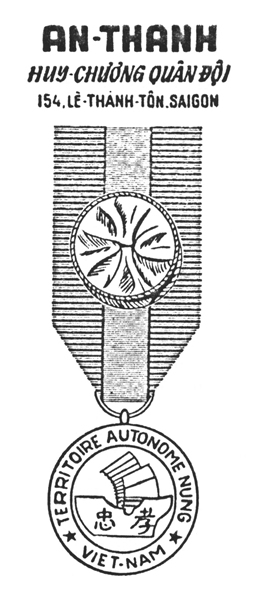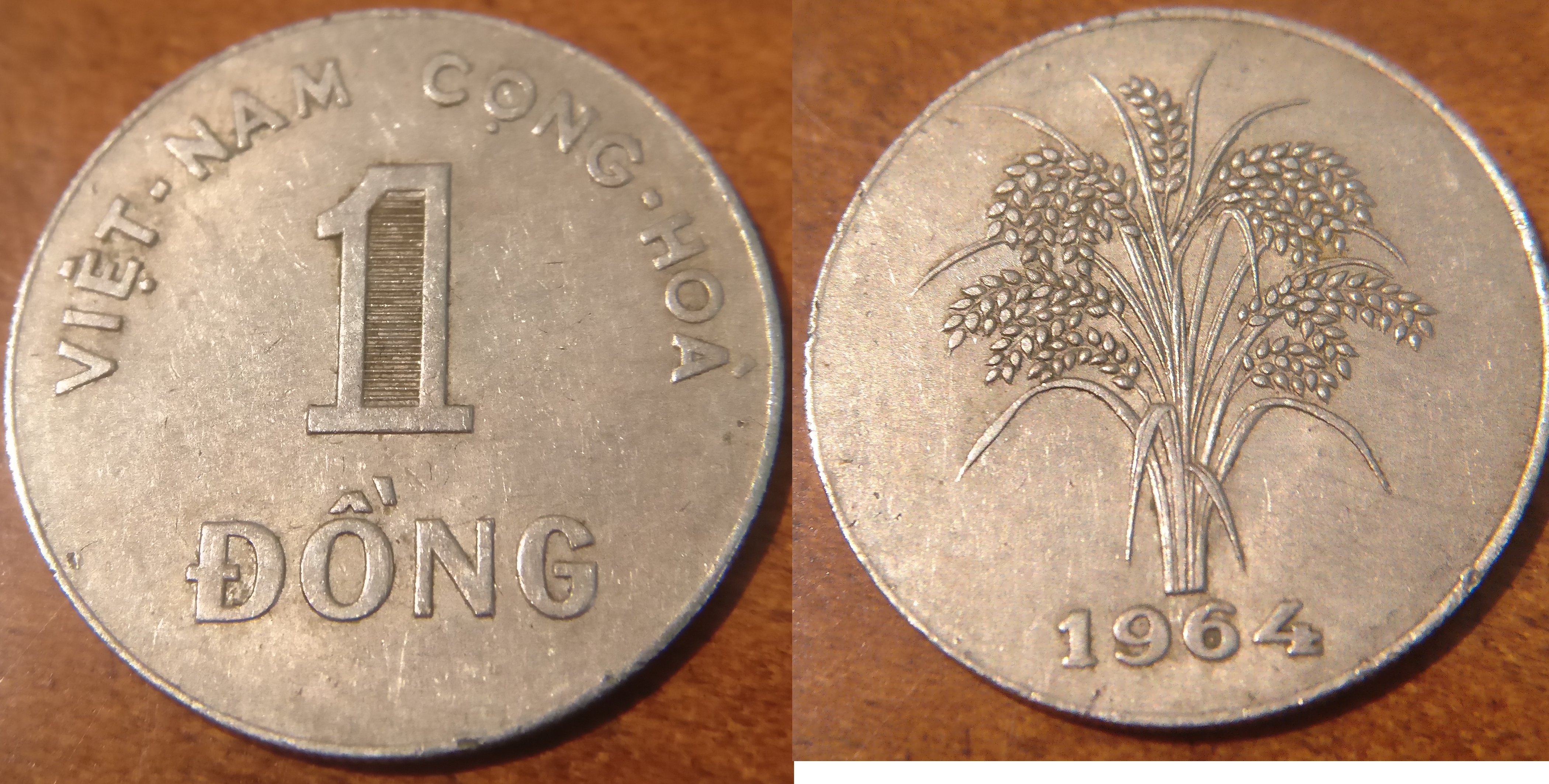|
Nùng Autonomous Territory
The Nùng Autonomous Territory (French: ''Territoire Autonome Nung''; Vietnamese: ''Khu tự trị Nùng''), also known as the Hải Ninh Autonomous Territory (Vietnamese: ''Khu tự trị Hải Ninh''), the Nùng Hải Ninh Autonomous Territory (French: ''Territoire autonome Nung de Hai Ninh''; Vietnamese: ''Khu tự trị Nùng Hải Ninh''), and the Nùng country (French: ''Pays Nung''; Vietnamese: ''Xứ Nùng''), abbreviated as TAN, was an autonomous territory for the Chinese Nùng within the French Union created during the First Indochina War by the French colonial government in Indochina. During this period the French hoped to weaken the position of the Việt Minh by granting more autonomy to ethnic minorities in Vietnam in the hopes of getting more support from them in their fight against the predominantly Kinh Việt Minh, which took control of large parts of Vietnam following the August Revolution and the power vacuum that occurred following the surrender of Japa ... [...More Info...] [...Related Items...] OR: [Wikipedia] [Google] [Baidu] |
Cold War
The Cold War is a term commonly used to refer to a period of geopolitical tension between the United States and the Soviet Union and their respective allies, the Western Bloc and the Eastern Bloc. The term '' cold war'' is used because there was no large-scale fighting directly between the two superpowers, but they each supported major regional conflicts known as proxy wars. The conflict was based around the ideological and geopolitical struggle for global influence by these two superpowers, following their temporary alliance and victory against Nazi Germany and Imperial Japan in 1945. Aside from the nuclear arsenal development and conventional military deployment, the struggle for dominance was expressed via indirect means such as psychological warfare, propaganda campaigns, espionage, far-reaching embargoes, rivalry at sports events, and technological competitions such as the Space Race. The Western Bloc was led by the United States as well as a number of other First W ... [...More Info...] [...Related Items...] OR: [Wikipedia] [Google] [Baidu] |
Thổ People
The Thổ ethnic group (also Keo, Mon, Cuoi, Ho, Tay Poong) inhabits the mountainous regions of northern Vietnam, mainly Nghệ An Province southwest of Hanoi. Many Thổ speak the Cuoi language, Tho language, which is closely related to Vietnamese language, Vietnamese. The Thổ population numbered 91,430 in 2019. The Thổ are one of the 4 main groups of Vietic speakers in Vietnam, the others being the Vietnamese people, Việt, Muong people, Mường, and Chứt people, Chứt. The name Thổ, which means "autochthonous" was originally applied to the Tay people, Tày ethnic group, however this usage is obsolete. History The Thổ people are a heterogeneous mix of different Vietic peoples. Around the end of the 17th century, Vietnam experienced multiple social upheavals that caused multiple migrations of Viet and Muong peoples into territory of other Vietic speaking ethnic minorities such as the Cuối and intermixed with the local populations. After a period of evolution, wer ... [...More Info...] [...Related Items...] OR: [Wikipedia] [Google] [Baidu] |
French Indochina
French Indochina (previously spelled as French Indo-China),; vi, Đông Dương thuộc Pháp, , lit. 'East Ocean under French Control; km, ឥណ្ឌូចិនបារាំង, ; th, อินโดจีนฝรั่งเศส, officially known as the Indochinese Union; vi, Liên bang Đông Dương, , lit. 'East Ocean Federation'; km, សហភាពឥណ្ឌូចិន; lo, ສະຫະພາບອິນໂດຈີນ and after 1947 as the Indochinese Federation,; vi, Liên đoàn Đông Dương; km, សហព័ន្ធឥណ្ឌូចិន; lo, ສະຫະພັນອິນດູຈີນ was a grouping of French colonial territories in Southeast Asia until its demise in 1954. It comprised Cambodia, Laos (from 1899), the Chinese territory of Guangzhouwan (from 1898 until 1945), and the Vietnamese regions of Tonkin (French protectorate), Tonkin in the north, Annam (French protectorate), Annam in the centre, and French Cochinchina, Cochinchin ... [...More Info...] [...Related Items...] OR: [Wikipedia] [Google] [Baidu] |
First Indochina War
The First Indochina War (generally known as the Indochina War in France, and as the Anti-French Resistance War in Vietnam) began in French Indochina from 19 December 1946 to 20 July 1954 between France and Việt Minh (Democratic Republic of Vietnam), and their respective allies. Việt Minh was led by Võ Nguyên Giáp and Hồ Chí Minh. Most of the fighting took place in Tonkin in Northern Vietnam, although the conflict engulfed the entire country and also extended into the neighboring French Indochina protectorates of Laos and Cambodia. At the Potsdam Conference in July 1945, the Combined Chiefs of Staff decided that Indochina south of latitude 16° north was to be included in the Southeast Asia Command under British Admiral Mountbatten. The Japanese forces located south of that line surrendered to him and those to the north surrendered to Generalissimo Chiang Kai-shek. In September 1945, Chinese forces entered Tonkin, and a small British task force landed at city of S ... [...More Info...] [...Related Items...] OR: [Wikipedia] [Google] [Baidu] |
1954 Geneva Conference
The Geneva Conference, intended to settle outstanding issues resulting from the Korean War and the First Indochina War, was a conference involving several nations that took place in Geneva, Switzerland, from 26 April to 20 July 1954. The part of the conference on the Korean question ended without adopting any declarations or proposals, so is generally considered less relevant. The Geneva Accords that dealt with the dismantling of French Indochina proved to have long-lasting repercussions, however. The crumbling of the French colonial empire in Southeast Asia led to the formation of the states of the Democratic Republic of Vietnam (North Vietnam), the State of Vietnam (the future Republic of Vietnam, South Vietnam), the Kingdom of Cambodia and the Kingdom of Laos. Diplomats from South Korea, North Korea, the People's Republic of China (PRC), the Union of Soviet Socialist Republics (USSR) and the United States of America (US) dealt with the Korean side of the Conference. For th ... [...More Info...] [...Related Items...] OR: [Wikipedia] [Google] [Baidu] |
Autonomous Territory
An autonomous administrative division (also referred to as an autonomous area, entity, unit, region, subdivision, or territory) is a subnational administrative division Administrative division, administrative unit,Article 3(1). country subdivision, administrative region, subnational entity, constituent state, as well as many similar terms, are generic names for geographical areas into which a particular, ind ... or territory, internal territory of a sovereign state that has a degree of autonomy—self-governance—under the national government. Autonomous areas are distinct from the constituent units of a federated state, federation (e.g. a state, or province) in that they possess unique powers for their given circumstances. Typically, it is either geographically distinct from the rest of the state (polity), state or populated by a national minority. Decentralization of self-governing powers and functions to such divisions is a way for a national government to try to increa ... [...More Info...] [...Related Items...] OR: [Wikipedia] [Google] [Baidu] |
Communist Party Of Vietnam
The Communist Party of Vietnam (CPV), also known as the Vietnamese Communist Party (VCP), is the founding and sole legal party of the Socialist Republic of Vietnam. Founded in 1930 by Hồ Chí Minh, the CPV became the ruling party of North Vietnam in 1954 and then all of Vietnam after the collapse of the South Vietnamese government following the Fall of Saigon in 1975. Although it nominally exists alongside the Vietnamese Fatherland Front, it maintains a unitary government and has centralized control over the state, military, and media. The supremacy of the CPV is guaranteed by Article 4 of the national constitution. The Vietnamese public generally refer to the CPV as simply "the Party" () or "our Party" (). The CPV is organized on the basis of democratic centralism, a principle conceived by Russian Marxist revolutionary Vladimir Lenin. The highest institution of the CPV is the party's National Congress, which elects the Central Committee. The Central Committee is the s ... [...More Info...] [...Related Items...] OR: [Wikipedia] [Google] [Baidu] |
Vietnam
Vietnam or Viet Nam ( vi, Việt Nam, ), officially the Socialist Republic of Vietnam,., group="n" is a country in Southeast Asia, at the eastern edge of mainland Southeast Asia, with an area of and population of 96 million, making it the world's sixteenth-most populous country. Vietnam borders China to the north, and Laos and Cambodia to the west. It shares maritime borders with Thailand through the Gulf of Thailand, and the Philippines, Indonesia, and Malaysia through the South China Sea. Its capital is Hanoi and its largest city is Ho Chi Minh City (commonly known as Saigon). Vietnam was inhabited by the Paleolithic age, with states established in the first millennium BC on the Red River Delta in modern-day northern Vietnam. The Han dynasty annexed Northern and Central Vietnam under Chinese rule from 111 BC, until the first dynasty emerged in 939. Successive monarchical dynasties absorbed Chinese influences through Confucianism and Buddhism, and expanded ... [...More Info...] [...Related Items...] OR: [Wikipedia] [Google] [Baidu] |
Đình Lập District
Vietnamese communal temples ( vi, Đình, Chữ Hán: 亭) are typical of buildings found in Vietnam villages, dedicated to worship the village God Thành hoàng, the village founder or a local hero. They also play the role as a meeting place of the people in the community, akin to modern civic centers. See also * * Religious buildings and structures in Vietnam Architecture in Vietnam {{vietnam-reli-stub ... [...More Info...] [...Related Items...] OR: [Wikipedia] [Google] [Baidu] |
South Vietnamese đồng
The đồng (銅) was the currency of South Vietnam from 1953 to 2 May 1978. It was subdivided into 100 ''xu'', also written ''su''. First đồng, 1953 to 1975 History In 1953, the Vietnam branch of the ''Institut d'Emission des Etats du Cambodge, du Laos et du Vietnam'' issued notes dual denominated in piastre and đồng. At the same time, the two other branches of the Bank made similar issues with the riel in Cambodia and the kip in Laos. The đồng circulated in those parts of Vietnam not under the control of the Communist forces, which by 1954 coincided with South Vietnam. Coins denominated in su were also introduced in 1953. In 1955, an independent issue of đồng banknotes was produced by the National Bank of Vietnam. Coins In 1953, 10, 20 and 50 su coins were introduced. In 1960, 1 đồng were added, followed by 10 đồng in 1964, 5 đồng in 1966 and 20 đồng in 1968. 50 đồng were minted dated 1975 but they were never shipped to Vietnam due to the fall o ... [...More Info...] [...Related Items...] OR: [Wikipedia] [Google] [Baidu] |

.png)
.png)
.jpg)

